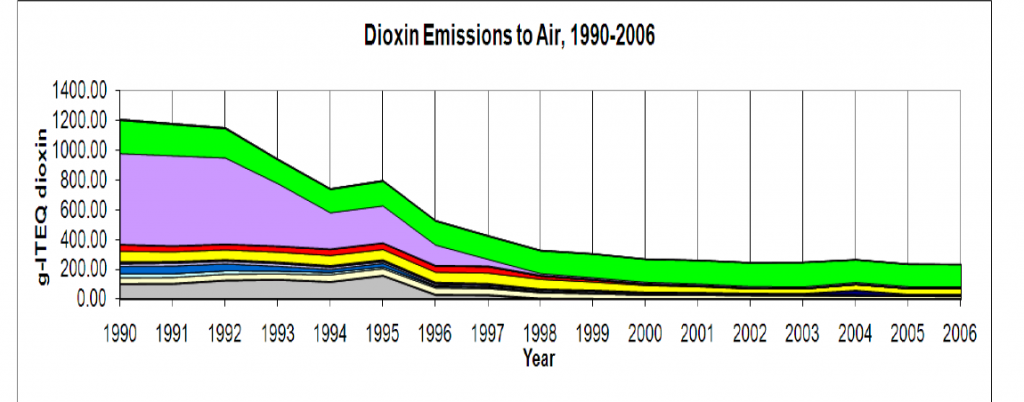We can still celebrate bonfire night without burning toxic waste
November 7, 2013 12:36 pm Leave your thoughts
“Bonfire Night Kills Whales” is the sort of headline that gives environmentalists a bad name. But the facts can’t be helped, even if the messengers must be shot for sounding like killjoys.
Most communities have festivals of subversion, in which the rules by which they live for the rest of the year – placid, ordered and obedient – are upended in a marvellous explosion of chaos. Without these festivals – May Day, Holi, Carnival, the Day of the Dead, Hallowe’en and Guy Fawkes Night are examples – we would all go slightly mad. Or madder.
There is no better antidote to the extreme civilisation which afflicts us than burning things and blowing things up. I’m all for it. Though with certain qualifications.
One of the better rules that gets upended on Fireworks Night is the law prohibiting fly-tipping. At all other times of year, most householders would no sooner drag their old sofas into the park and set light to them than torch their neighbour’s car. But build a community bonfire and it becomes a magnet for people who can’t be bothered to take their junk to the dump. Old furniture, skirting boards covered in paint, treated outdoor timber: the whole lot goes on – and goes up. And no one seems to care. The practice seems to be acceptable even in the most unlikely places.
At a children’s event run by a community garden group last weekend, I saw that the bonfire had been stacked with old painted boards. The group that runs it, which emphasises its green credentials, boasts that the garden was created on land reclaimed from a “toxic waste-filled old garage site”. So let’s celebrate by burning toxic waste.
Dioxins and furans are created when substances containing chlorine are burnt at low temperatures. They are extremely toxic. They can cause cancer and disrupt the endocrine (hormone-producing) system. They can affect the development of foetuses and babies. They are persistant and they bioaccumulate. This means that they build up in fatty tissue faster than they can be broken down or excreted.
They are particularly damaging to animals at the top of the food chain, as these species collect all the persistant organic pollutants in the bodies of the animals they eat. Much of the dioxin and furan load released into the air is eventually washed into the sea, where it is passed up the food chain. These chemicals are likely to shorten the lives and reduce the reproductive success of whales and dolphins.
They also find their way into human breast milk, mostly through the milk and meat of animals eating grass or grain onto which dioxins have fallen. It should be emphasised that doctors advise mothers to breastfeed, despite the pollutants that might be passed to their children: the levels are low enough to ensure that any danger is outweighed by the massive benefits. But this doesn’t mean that we should not seek to eliminate these horrible chemicals from the food chain.
On the whole we’ve been doing pretty well. I spend much of my life attacking governments and their failure to stop corporations from harming people and the living planet. But in this case, in most developed nations, regulation has been effective.
In the UK, for example, dioxin releases to the air fell from an estimated 1188 units of toxic equivalence in 1990 to 265 in 2006. And this was before a new set of regulations came into force in 2008. I have not been able to find more recent figures, and nor, so far, has the government (I asked yesterday).
But two sources remained – and probably remain – constant. They are roughly equal in size, and between them they produced, in 2006, over 40% of our dioxin emissions. The proportion is likely to be higher today.
One of them is houses catching fire. With the exception of dodgy developers with generous insurance packages, we already do all we can to prevent this from happening. The other is burning junk on bonfires.
Here’s the graph produced for the government’s environment department by AEA Technology.
Lilac is incineration, grey is the power sector, most of the rest is other types of industry. The bright green is people burning rubbish and houses catching fire, which make a roughly equal contribution. Every other source has shrunk dramatically. This has not.
Plastics, paints, timber treatments and other manmade chemicals contain chlorine. The best way of manufacturing dioxin it is to stack up your junk outdoors well in advance, make sure that it gets nice and damp, so that it burns at low temperatures, and then roast it in an uncontained fire. Which is just what we do on November 5th.
Precise measurements of the pollutants arising from unregulated bonfires are difficult, and perhaps as a result of this I have found estimates of the contribution made by Bonfire Night alone to the UK’s total emissions of dioxins that range from 2% to 14%. These use old figures, so the proportion is likely to be higher today.
This shouldn’t be hard to stop: a public information campaign about chucking rubbish on fires reinforced by a few spot checks is likely to be quite effective. But perhaps officials are so scared of being labelled elf’n’safety puritans that they dare not get involved.
It’s not about extinguishing people’s fun. It’s about not being bloody stupid. Burning untreated wood has little impact. It is surely not beyond the wit of humanity to build a bonfire, go a bit mad and have a great night without creating a cloud of toxic waste.
Categorised in: Article
This post was written by George Monbiot

